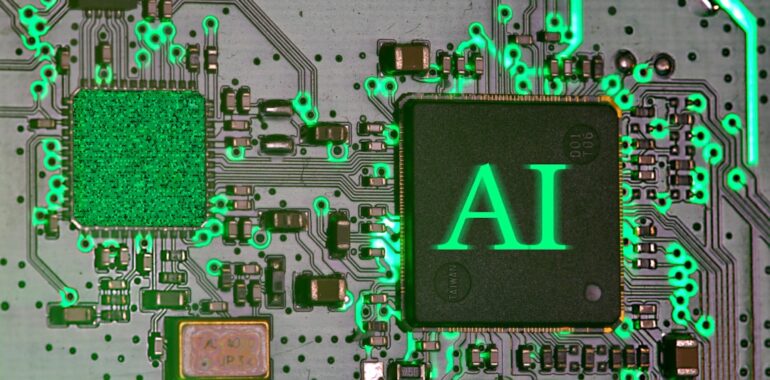Unraveling AI, Machine Learning, and Deep Learning: What Sets Them Apart?

Meta description: Unravel the unique characteristics of AI, machine learning, and deep learning to better understand their individual contributions to technology and innovation. Explore the distinctions and impacts of these technologies in our comprehensive guide.
Introduction
In today’s rapidly evolving technological landscape, terms like Artificial Intelligence (AI), Machine Learning (ML), and Deep Learning (DL) are frequently mentioned. While they are often used interchangeably, each represents a distinct facet of machine intelligence. Understanding the differences between them is crucial for anyone looking to harness their potential in business, education, or personal projects.
What is Artificial Intelligence?
Artificial Intelligence is the broadest concept among the three, encompassing any technique that enables machines to mimic human intelligence. AI systems can perform tasks such as reasoning, learning, problem-solving, perception, and language understanding. However, AI can be categorized into:
-
General AI: Hypothetical systems that possess the ability to understand, learn, and apply knowledge in a way comparable to human intelligence across a wide range of tasks. While popular in science fiction, General AI remains a distant goal.
-
Narrow AI: Practical implementations of AI that focus on specific tasks. Examples include virtual assistants like Siri, recommendation systems on Netflix, and autonomous vehicles. These systems excel in their designated functions but lack the versatility of human intelligence.
Diving into Machine Learning
Machine Learning is a subset of AI that focuses on the development of algorithms allowing computers to learn from and make decisions based on data. Instead of being explicitly programmed for every task, ML systems improve their performance through experience. Key aspects of machine learning include:
-
Supervised Learning: The model is trained on labeled data, learning to predict outcomes based on input-output pairs.
-
Unsupervised Learning: The model identifies patterns and relationships in unlabeled data without predefined outcomes.
-
Reinforcement Learning: The model learns by interacting with an environment, receiving rewards or penalties based on its actions.
Machine learning has revolutionized industries by enabling more accurate predictions, enhanced decision-making, and automation of complex processes.
Exploring Deep Learning
Deep Learning is a specialized branch of machine learning that utilizes neural networks with many layers (hence “deep”). These networks are inspired by the human brain’s structure and are particularly effective in handling large amounts of unstructured data, such as images, audio, and text. Key characteristics of deep learning include:
-
Neural Networks: Composed of interconnected layers of nodes (neurons) that process data, recognize patterns, and make decisions.
-
Feature Extraction: Deep learning models automatically identify and extract relevant features from raw data, reducing the need for manual intervention.
-
Scalability: These models perform exceptionally well as the volume of data increases, making them ideal for big data applications.
Deep learning has been pivotal in advancements like image and speech recognition, natural language processing, and autonomous driving.
Key Differences Between AI, ML, and DL
| Aspect | Artificial Intelligence | Machine Learning | Deep Learning |
|---|---|---|---|
| Scope | Broadest concept encompassing all intelligent systems | Subset of AI focused on data-driven learning | Subset of ML utilizing neural networks with multiple layers |
| Complexity | Can range from simple rule-based systems to complex autonomous agents | Involves statistical methods to learn from data | Involves deep neural networks with layered architectures |
| Data Requirements | Varies depending on the application | Requires significant data for training | Requires vast amounts of data and computational power |
| Flexibility | Can perform a wide range of tasks depending on the system | Typically designed for specific tasks | Highly specialized for tasks like image and speech recognition |
| Human Intervention | Varies; some systems require extensive programming | Requires dataset preparation and feature engineering | Relies on large datasets and automated feature extraction |
The Impact of Machine Intelligence on Businesses and the Economy
Machine intelligence, encompassing AI, ML, and DL, is transforming industries by:
-
Enhancing Efficiency: Automating repetitive tasks allows businesses to allocate resources more effectively.
-
Driving Innovation: Machine intelligence fosters the development of new products and services, opening up new market opportunities.
-
Improving Decision-Making: Data-driven insights enable more informed and strategic business decisions.
-
Creating Jobs: While some roles may become obsolete, new opportunities in AI development, data analysis, and related fields are emerging.
However, the integration of machine intelligence also presents challenges, such as the need for upskilling the workforce and addressing ethical considerations related to data privacy and algorithmic bias.
Approaching Structural Integration of Machine Intelligence
Successfully integrating machine intelligence into an organization requires a structured approach:
- Assess Needs and Goals: Identify areas where AI, ML, or DL can add the most value.
- Invest in Education and Training: Equip your team with the necessary skills through initiatives like GenAI.London, which offers structured learning paths in machine learning and deep learning.
- Start with Pilot Projects: Implement small-scale projects to understand the capabilities and limitations of machine intelligence technologies.
- Scale and Optimize: Based on pilot results, scale successful projects and continuously optimize processes.
- Foster a Collaborative Culture: Encourage collaboration between data scientists, engineers, and other stakeholders to drive innovation.
Conclusion
Understanding the distinctions between AI, machine learning, and deep learning is essential for leveraging machine intelligence effectively. As these technologies continue to evolve, their impact on businesses and the global economy will only grow, driving unprecedented levels of innovation and efficiency.
Ready to dive deeper into machine intelligence and its applications? Explore more at Invent AGI and empower your journey in the world of AI.




